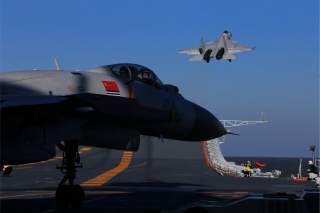Is There Any Way to Counter China's Gray Zone Tactics in the South China Sea?
Smaller and weaker states can purposefully shift the onus of escalation to gray-zone tactics by increasing the likelihood of conflict.
In the years that followed, Vietnam continued to ramp-up cooperation with China’s rivals such as India and Japan. Yet it suffered no Chinese blowback. In fact, bilateral border trade continued to flourish. Notably, trade with Guangxi province jumped by 8.6 percent year-on-year to almost $6.9 billion in the first half of 2015—the highest of any border city in China. By early 2017, Beijing remains Hanoi’s biggest trade partner; the latter having raised exports to the former by 34.4 percent year-on-year. Even though Hanoi halted drilling in disputed waters after a reported threat from Beijing, it continued to challenge the latter over the South China Sea issues, especially during the most recent ASEAN meeting in Manila.
Peace isn’t the Natural State of Affairs in World Politics
Indonesia and Vietnam show that it’s possible to draw the line between resolutely defending one’s sovereignty and rights in the South China Sea, and fostering economic links with Beijing. It is possible for smaller and weaker states to purposefully shift the onus of escalation to the party contemplating gray-zone tactics through increasing the likelihood of conflict. The thought of suggesting this is troubling of course, since it is premised on the political calculation that the risk of war can be reduced by taking steps to lower the threshold for war itself.
Yet it does highlight the fallacy of believing that peace is the natural state of affairs in world politics. It’s time for Manila and Kuala Lumpur to learn from their neighbors on how to stand up to Beijing’s gray-zone tactics through a clear demonstration of resolve.
Koh Swee Lean Collin is research fellow with the Maritime Security Programme, at the S. Rajaratnam School of International Studies based in Nanyang Technological University, Singapore.

